
Biodiversity Conservation And Restoration

Biodiversity Conservation And Restoration
For millennia, nature has provided humans with everything they need to live at no cost: water, food, medicine, clothes, but also safety, well-being, leisure and much much more. Though we may not be conscious of it, biodiversity thus provides us with a multitude of benefits on a daily basis that we now refer to as ecosystem services. Each of these services are based on a fragile balance and underlying interactions between species and ecosystems. Scientists estimate that 60% of services provided by nature are already degraded or used unsustainably.
Pollution, deforestation, overfishing, intensive agriculture, habitat destruction, poaching, climate change… the reasons behind the erosion of our natural heritage are manifold.
Biodiversity is currently disappearing at 1,000 times the natural rate of extinction. This process is so accelerated that ecosystems are incapable of adapting. Out of the 87,967 species studied by the International Union for Conservation of Nature (IUCN), 25,062 species are currently threatened with extinction. According to scientists, at this rate, one quarter of living species could be extinct by 2050. What’s more, every year, between 13 and 15 million hectares of forest disappear. Yet out of the planet’s forests affected by deforestation, it is tropical forests that are impacted to the largest extent, despite the fact that they are home to 50% of the world’s known species of marine fauna and flora, including 80% of insects and 90% of primates.
Since 2006, the Action Carbon Solidaire Programme has supported various biodiversity conservation and restoration projects. These projects cover forest ecosystems and coastal and marine ecosystems in conjunction with the programme Time for the Planet.
Since 2006, thanks to the Action Carbone Solidaire programme:
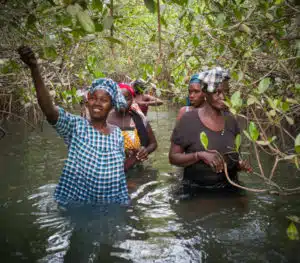
Preserving biodiversity in the Saloum Delta in Senegal
This project is part of a desire to preserve the wetlands of the Saloum Delta by conserving the mangroves and shellfish resources. It also aims to support female entrepreneurship by supporting 8 groups of women in 3 communities to develop […]

Coral reef restoration for coastal resilience in Madagascar
Coral reefs and coastal ecosystems are home to 25% of the world’s marine life (WWF, 2022). Communities in tropical developing countries – including Madagascar – depend on these natural resources. Coral reefs are an abundant source of marine food and […]
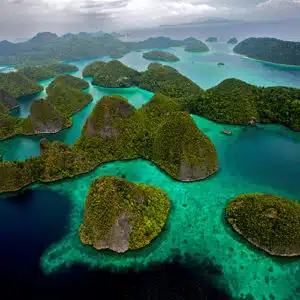
Mangrove Rehabilitation In Tanakeke
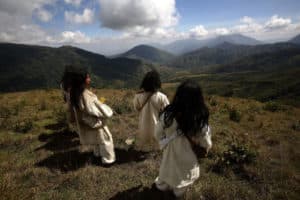
Forest Regeneration In Colombia
Since 1997, in an effort to curb the destruction of the Sierra Nevada de Santa Marta, the association Tchendukua Ici et Ailleurs has undertaken the acquisition and restitution of land to the Kagaba indigenous communities (Kogi), considered the best placed […]
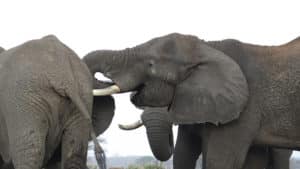
Ecoexist – Human-Elephant Coexistence
This project aims to address the underlying causes of human-elephant conflicts in the three villages of Tobera, Kapatura and Tobera 4 in the Okavango Panhandle region of northwest Botswana.
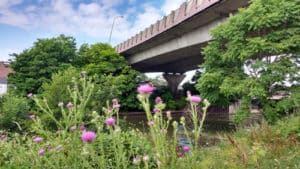
Biodiversity Restoration in the Choisy-Le-Roi Harbour Basin
The Coulée Verte du Val-de-Seine greenbelt project is a participatory, educational, ecological and experimental project led by Au Fil de l’Eau, a social economy association, and the GoodPlanet Foundation. Situated in a rapidly developing area, the Coulée Verte is the […]
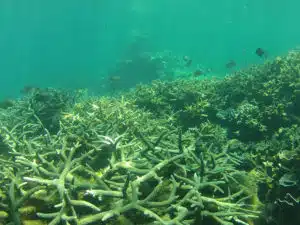
Marine And Coastal Ecosystem Conservation In Mauritius
Coastal coral reefs and ecosystems are currently endangered in many of the world’s regions. Although they take several years to form and develop, it takes only seconds for them to die. This project aims to contribute towards protecting maritime and […]
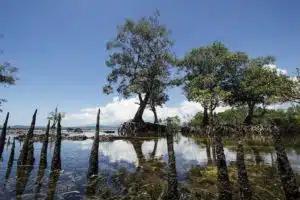
Marine Protected Areas In Bahoi
This project aimed to strengthen the protection of ecosystems through the reinforcement, expansion and creation of community-based marine protected areas in North Sulawesi thanks to a participatory approach involving local communities.
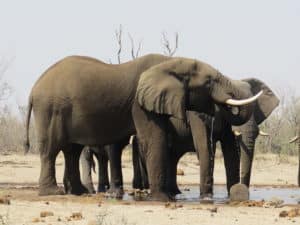
Elephant For Africa – Human-Elephant Coexistence
This project aims to improve Human-Elephant coexistence in the Boteti River region of Botswana.